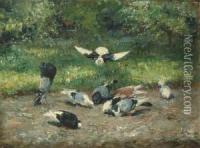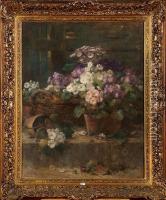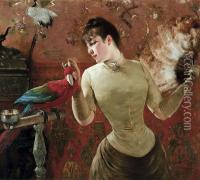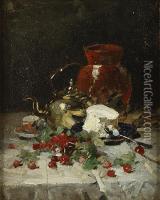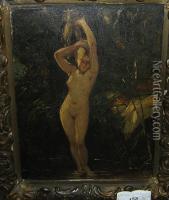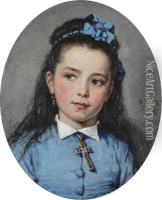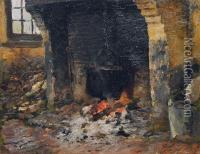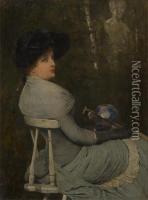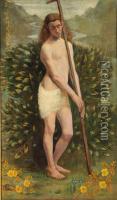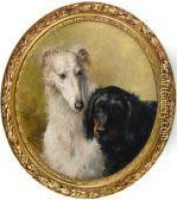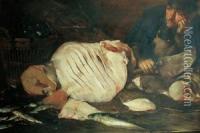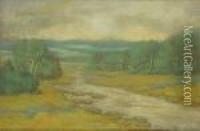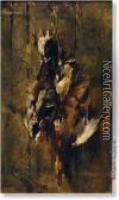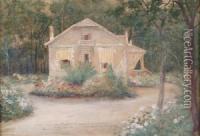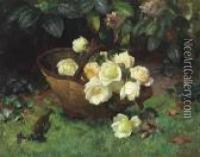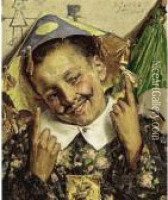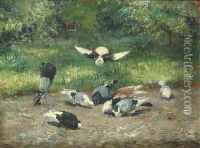Eugene Joors Paintings
Eugene Joors was a Belgian painter known for his skill in depicting realistic scenes and portraits with a remarkable attention to detail. Born on October 5, 1850, in Antwerp, Belgium, Joors developed an early interest in art, which was nurtured in the vibrant cultural environment of his hometown. Antwerp had a rich artistic heritage, being the city of Peter Paul Rubens and Anthony van Dyck, which influenced young Joors in his formative years.
Joors enrolled at the Royal Academy of Fine Arts in Antwerp, where he received a traditional art education. His studies there were pivotal to his development as an artist, allowing him to refine his technical abilities and immerse himself in the academic style prevalent at the time. He was particularly influenced by the Flemish old masters and the meticulous attention they paid to the natural world.
After completing his education, Joors embarked on his artistic career, which was marked by his dedication to naturalism. His artworks often depicted everyday life, landscapes, and still lifes, characterized by a serene and harmonious quality. He was adept at capturing the play of light and shadow, showcasing his mastery of color and composition.
Joors' portraits were also well-received, as they displayed not just the physical likeness of the subjects but also a sense of their inner life and character. He was able to convey the mood and personality of his sitters with sensitivity and depth, earning him commissions from various patrons.
Throughout his career, Eugene Joors exhibited his work in various salons and exhibitions, gaining recognition and accolades. His paintings were appreciated for their clarity, realism, and the tranquil beauty they exuded. Joors continued to paint until his death on November 23, 1910, leaving behind a body of work that remains admired for its precision and elegance.
In addition to his painting, Joors also contributed to the artistic community as a teacher, passing on his knowledge and techniques to the next generation of artists. His legacy is preserved in the collections of several museums, where his paintings continue to be studied and appreciated for their contribution to Belgian art and the broader tradition of European realism.
